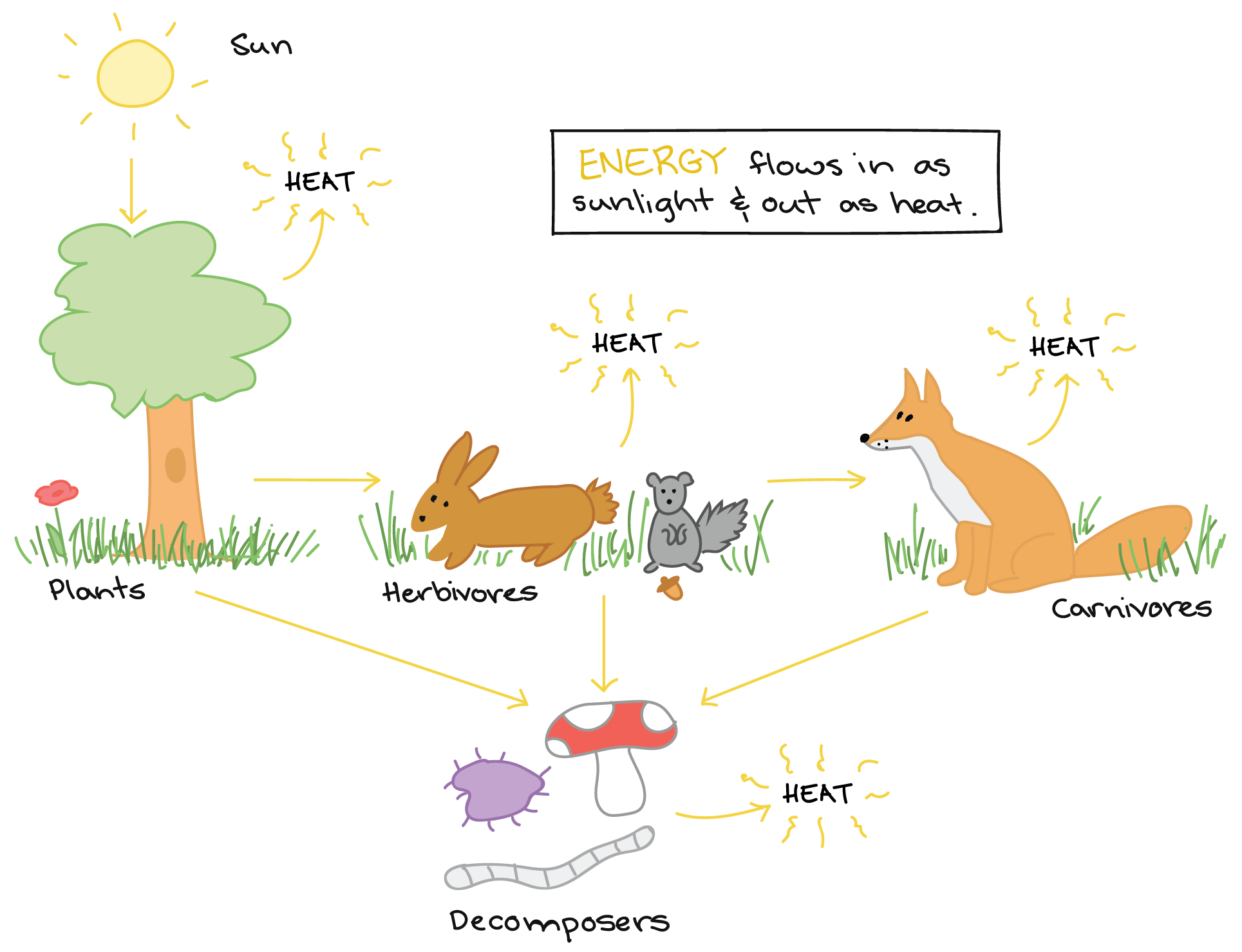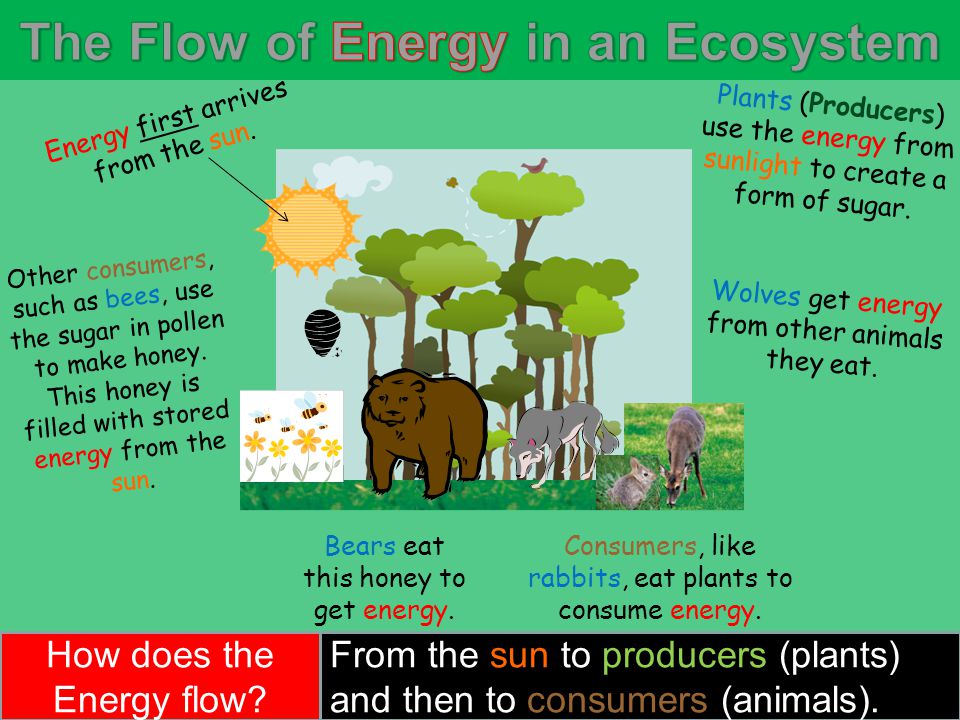They improve habitat and increase populations of countless species from birds of prey to pronghorn and even trout.
How does energy move through an ecosystem from a tree to a wolf.
And so the whole time that we go through this video think about these two ideas.
Energy pyramids are another tool that ecologists use to understand the role of organisms within an ecosystem and how much energy is available at each stage of a food web.
At the base of the pyramid are the producers who use photosynthesis or chemosynthesis to make their own food.
And even after watching this video look at ecosystems around yourself even ones that you re a part of and think about how energy flows and how matter s recycled.
Our ecosystem is maintained by the cycling energy and nutrients obtained from different external sources.
Saprophytic or detritus food chain dfc in this type of food.
The feeding relationships that exist in an ecosystem can be shown by a food chain.
The energy in most ecosystems flows through the food chain.
What is the source of all energy in the pyramid model l.
There are basically three different types of food chains in the ecosystem namely grazing food chain gfc this is the normal food chain that we observe in which plants are the producers and the energy flows from the producers to the herbivores primary consumers then to carnivores secondary consumers and so on.
At the first trophic level primary producers use solar energy to produce organic material through photosynthesis.
A unit used to measure energy is che kcal.
Herbivores or primary consumers make up the second level.
Wolves play a very important role in the ecosystems in which they live.
The plants are then consumed by animals bacteria and other creatures which are themselves eaten by other creatures.
Energy comes in the ecosystem from outside source i e.
Since 1995 when wolves were reintroduced to the american west research has shown that in many places they have helped revitalize and restore ecosystems.
Energy transfer in ecosystems.
How much energy does this source provide to a square meter of the earth per year.
Secondary and tertiary consumers omnivores and carnivores follow in the subsequent sections of the pyramid.
The arrows represent the direction of energy flow and mean gets eaten by.
Be sure your answer includes units.
Most of the energy in an ecosystem is available at the producer level.
In terrestrial ecosystems and most marine ecosystems the energy flow starts in green plants that harvest some of the sun s energy.
Trophic levels provide a structure for understanding food chains and how energy flows through an ecosystem.
As you move up on the pyramid the amount of available energy decreases significantly.
The cycle of energy is based on the flow of energy through different trophic levels in an ecosystem.


























